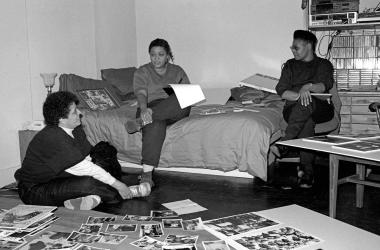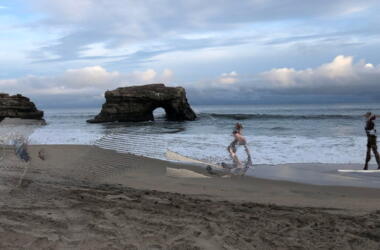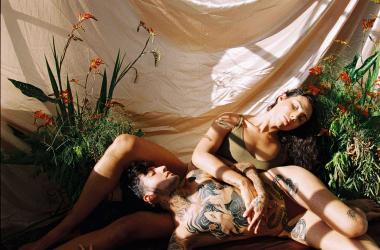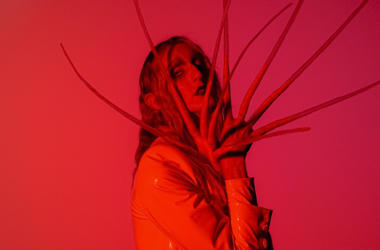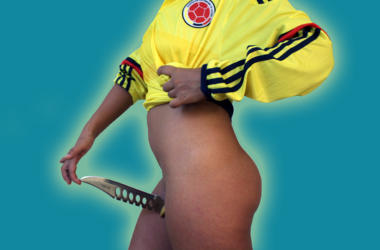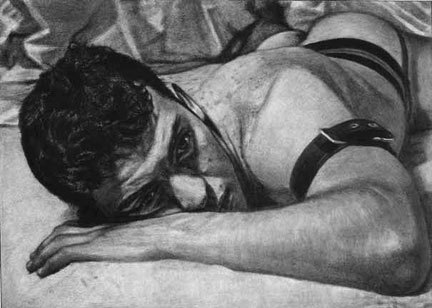
Author
INDISCREET: Candid views by Stephen HaleImage
STEPPHEN HALE Ivan, ca. 1995 Pencil on paper 23" x 29"
PAST
INDISCREET: Candid views by Stephen Hale
Sep 13, 2005 - Oct 15, 2005
The Drawings of Stepphen Hale
by Tom Saettel
(from THE ARCHIVE: No. 17: Summer 2005)
Stephen Hale’s labor-intensive realist drawings are truly a labor of love. Stephen sees his art as documenting his friends. He values his love of his friends and his love of drawing above all else. Although often portrayed as having documented East Village culture, this phenomenon is quite coincidental. Living and working in the East Village and furiously drawing there for over 20 years, this “documenting of the East Village” was inevitable.
Hale is a portrait artist. Densely applied graphite on paper is his medium. Three-quarter-length crop-ped bodies are most common in his art, but closer cropped facial portraits are incredibly engaging. At the start of his career the portraits were full figure, clearly in their environments—standing in a tenement hallway or sitting on the edge of a bed in his first New York residence, the YMCA. These were lighter drawings with about one-tenth the amount of graphite typical of his mature work. Over time Hale has honed his compositions, diminishing backgrounds to a hint of the environment like the tiled bathroom wall in Giovanni or a hint of a trellised garden wall in his double nude portrait, a husband and wife who live in New Mexico.
This close cropped composition of “solitary figures against a wall” with a minimum of spatial details delivers the message which consumes Stephen—alienation. As a boy in Vermont and as an adult in New York, Stephen has always felt isolated. In the introduction to the 1995 Bridgewater/Lustberg Gallery catalog of his one-person exhibition, Stephen Hale: Male Nudes, Gary Indiana wrote of Hale’s subjects. “Their expressions are cryptic. They don’t offer the mystery of the blank stare but instead the challenge of possessing a secret we can’t know….something about them that they are not going to tell you.” Indiana says Hale’s subjects are available for us to revel in their beauty but they hold something back, as if the subjects were really “mulling over problems of [their] own.”
Stephen speaks of drawing people “inside their spaces.” He means this more psychologically than physically. He tried drawing people “outside their space” but it did not suit him well. The color pencil drawings of the East Village clubs—additionally ushering in this stamp of East Village documentarian— are busy drawings lacking the focus of his other portrait work. There are color pencil drawings which hold the bang of his black and white work. An example is Orlando (see page 2, inside front cover of this publication).
Stephen works from photographs simply for convenience. His drawings take time. Stephen eschews the term “photo realist” for its commercial connotations. He has said, “I’m a realist and I work from photos,” but he ends it there. One would think Stephen might reference the noted gay photographers such as Bill Costa for subject matter or Peter Duterte for his baroque lighting and velvety blacks, but he does not. Surprisingly, Stephen cites Weegee as a great inspiration—his documentary nature and the rich blacks of his prints.
Growing up Stephen amassed over 5,000 copies of Life magazine. He was enthralled by the movie stars, especially portraits of Marilyn Monroe and Frances Farmer. He related to the stars’ fragility. The realm of making art was enkindled by his grandmother and his father, who were amateur water- colorists. A high school art teacher, Larry Golden, encouraged his innate facility. He made his way to The Rhode Island School of Design by the late 70s with the dream of becoming an illustrator, especially of his beloved movie stars. Richard Merkin, the esteemed illustrator and teacher at RISD, became his mentor. Artistically possibly Merkin’s chronicling of the world was an influence but Merkin’s advice to “be yourself” is valued by Stephen as the best thing anyone ever said to him.
He left RISD in 1982, deciding he did not want to become an illustrator but just to draw and pursue “serious art.” He began exhibiting in New York galleries in 1985. Ironically Stephen has worked quite a bit as an illustrator. From 1989 to 1991 he worked for The New Yorker. A beautiful, richly drawn portrait of Sarah Vaughn dates from this period. He has also done movie and theatre poster illustrations and is in disbelief that the most money he has ever made was from a towel commission. “That’s the way love goes,” quips Stephen.
Looking at Stephen’s drawings one might be reminded of Georges Seurat’s dense charcoal character studies, the baroque painters, Daumier, Hockney or Richard Longo, but Stephen denies the influence. Egon Schiele’s alienated figures and “cryptic” expressions are admired.
Stephen Hale’s one-person exhibition, Indiscreet: Candid Views by Stephen Hale, opens at LLGAF Tues., September 13, 6-9pm and runs through Octobeer 15, 2005.
Related

PAST
Chitra Ganesh: A city will share her secrets if you know how to ask
Oct 18, 2020 - Jun 01, 2022
more
PAST
DARK RIDE: A Nocturnal Journey into the World of Erotic Desire
May 08, 2007 - Jun 30, 2007
more
PAST
SELDOM SEEN: Never or rarely seen works from the permanent collection
Nov 17, 2009 - Jan 23, 2010
more
PAST
LESBIANS SEEING LESBIANS: Building Community in Early Feminist Photography
Sep 14, 2011 - Dec 22, 2011
more
PAST
QUEERS IN EXILE: the Unforgotten Legacies of LGBTQ Homeless Youth
Jul 17, 2013 - Jul 28, 2013
more
PAST
Nude In Public: Sascha Schneider: Homoeroticism and the Male Form circa 1900
Sep 20, 2013 - Dec 08, 2013
more
PAST
INTERFACE: Queer Artists Forming Communities through Social Media
May 15, 2015 - Aug 02, 2015
more
PAST
MEDIUM OF DESIRE: An International Anthology of Photography and Video
Dec 18, 2016 - Mar 27, 2016
more
PAST
RUBBISH AND DREAMS: The Genderqueer Performance Art of Stephen Varble
Sep 29, 2018 - Jan 27, 2019
more
PAST
ROBERT GIARD (1939-2002) Particular Voices: Portraits of Gay & Lesbian Writers
Apr 25, 2018 - May 20, 2020
more





